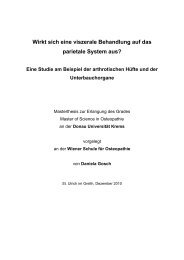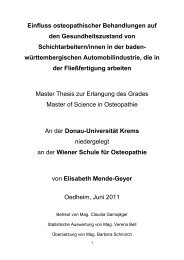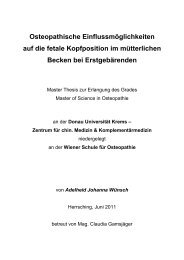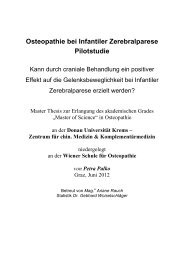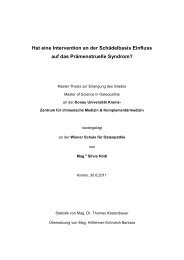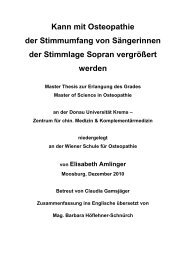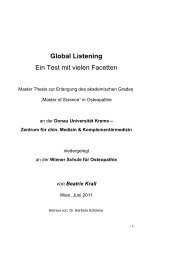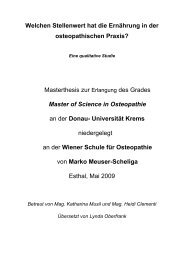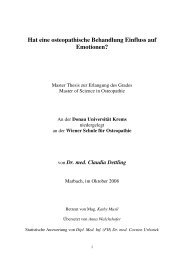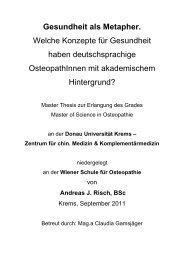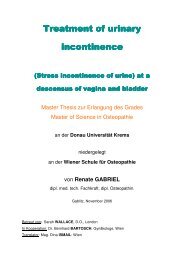Comparison between CV4 and EV4 - Osteopathic Research
Comparison between CV4 and EV4 - Osteopathic Research
Comparison between CV4 and EV4 - Osteopathic Research
You also want an ePaper? Increase the reach of your titles
YUMPU automatically turns print PDFs into web optimized ePapers that Google loves.
35<br />
4.2.1 <strong>CV4</strong>-technique = Compression of the fourth ventricle<br />
Position of the h<strong>and</strong>s:<br />
• the underarms are lying on the bed<br />
• h<strong>and</strong>s are resting in each other<br />
• the thenar eminences <strong>and</strong> thumbs parallel<br />
<strong>and</strong> pointing in caudal direction.<br />
• the thenar eminences are located on the<br />
lateral angle of the occipital bone.<br />
fig. 12<br />
<strong>CV4</strong><br />
Performance:<br />
In the cranial extension phase, the intent is to follow the shrinking of the occiput<br />
<strong>and</strong> to somewhat press together its anguli laterales. In the cranial flexion phase,<br />
the intent is to hinder the anguli’s branching out laterally by using minimal<br />
compression whereby care must be taken not to block the cranial rhythm.<br />
Movement amplitude gets smaller whereby the flexion <strong>and</strong> extension movement<br />
comes to a stop after several cycles. This is called the “stillpoint” <strong>and</strong> can last<br />
from a few seconds to several minutes while h<strong>and</strong>s remain on the occiput.<br />
At the end of the stillpoint, the practitioner feels a strong expansion force in the<br />
form of pressure on the balls of the thumbs which he passively observes. These<br />
cranial expiration <strong>and</strong> inspiration movements are observed for a few cycles to<br />
once again judge the quality of the cranial rhythm.<br />
Margit Grill / 2006



